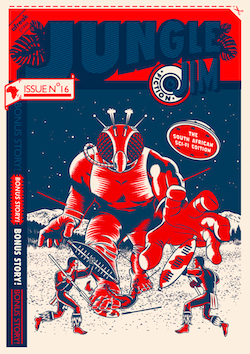With the release of Sarah Lotz’s The Three, the US, UK, and a few dozen other countries have all been exposed to another—if you’ll excuse the cross-media metaphor—big budget blockbuster from South Africa’s genre scene. I say “another” because the first was Lauren Beukes’ The Shining Girls.
If your response at this point is “What is The Three?” or “What is a shining girl?” feel free to bookmark this post and come back later—those two books might not be “Under the Radar,” but I have no reservation about recommending them with every fiber of my being.
Unless you hate brilliant contemporary science fictional horror. In which case… I got nothing for you.
So, if you’ve made it this far, I’m going to assume you’ve read both of the above and/or are waiting for your postman (and/or trip to your Local Independent Bookshop, like a Good Person). And perhaps, like me, you’re a bit curious about what’s going on in South Africa and, good lord, are there more Lotzabeukeses ready to be unleashed upon the world?
The answer, I’m delighted to say, is “yes.” And some of them, due to the magic of international shipping and the wizardry of ebooks, are already readily available. Just, perhaps, under the radar…
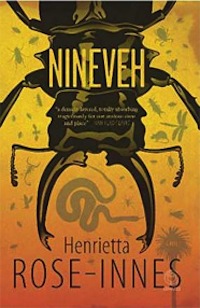
Henrietta Rose-Innes’ Nineveh (2012) is perhaps only marginally genre—but it is disconcerting to the point of atmospheric Weird-ness and as chilling as the best apocalyptic horror. Katya is an exterminator with a heart. She tries her best to move vermin rather than kill it, an approach that differs greatly from that of her (slightly sleazy) insecto-genocidal (and absent) father and mentor.
Katya is hired by a wealthy suburban developer to sort out a beetle invasion. It starts simple, but, unsurprisingly, grows increasingly complicated. The beetles are a complete unknown, the previous exterminator was her (still sleazy, still absent) father, the developer is shady, and the property itself has the unsettling atmosphere that comes with abandoned wealth and half-finished buildings. Nineveh is a beautiful and disturbing mystery about what lies beneath… ‘vermin’ in truth and metaphor.
If you liked: China Miéville’s King Rat, Lauren Beukes’ Zoo City, Tom Pollock’s The City’s Son
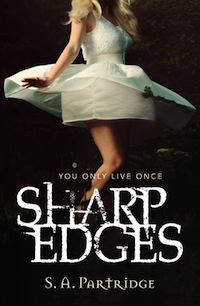
S.A. Partridge’s Sharp Edges (2013) features six teenage friends at a music festival: a weekend of flirtation and excess, coming of age and celebration. Except only five come back. The whole ‘dead friend’ shtick has been done to death (sorry) in contemporary YA, but there’s always room for a new perspective—especially when, like Sharp Edges, it achieves the perfect balance of hard-hitting and sympathetic. Sharp Edges is a gutsy YA story told from six different points of view. Partridge excels at bringing all six characters to life as distinct, compelling voices. Similarly, despite being immersed in the characters’ minds, Partridge manages to keep the reader surprised: each chapter comes with twists and (often quite upsetting) surprises. Like other great contemporary YA novels, this is a tough book, and a powerful one.
If you liked: Julie Berry’s All The Truth That’s In Me, Stephanie Kuehn’s Charm & Strange, Cat Clarke’s Torn.
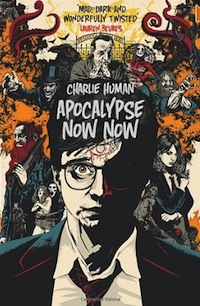
Charlie Human’s Apocalypse Now Now (2013) is your traditional epic fantasy. Teenage boy (Baxter). Girlfriend kidnapped (Esme). Heads off to save her and discovers he’s the heir to a prophesy. Faithful sidekick/mentor figure thing. Fights big ageless evil. Simple. Obviously.
Except Apocalypse Now Now is set in contemporary Cape Town, Baxter peddles pornography as part of his crazy Gangs of the Playground power grab, Esme is terrifying, the sidekick is Jackie Ronin, comma, Monster Hunter and Sorcerer, and the ageless evil is a transdimensional octopus. Oh, and that porn? The stuff featuring actors dressed as mythological monsters, joylessly humping away? NOT ACTORS.
So, by ‘traditional’, I mean, ‘not at all’. And, to add icing to the cake, Apocalypse’s bonkersness isn’t even the best part. Baxter’s a fantastic, empathetic character—perhaps because he’s a teenage geek schemer, living the fantasy life of a Machiavellian high school. And that’s before he’s even living an actual fantasy life. Come for the octopus cult and sex-monsters, stay for the characters (and the best final battle ever).
If you liked: Welcome to Night Vale. And, uh… Harry Potter does The Shambling Guide to New York City, shot like From Dusk till Dawn and then aired on late night Cinemax.
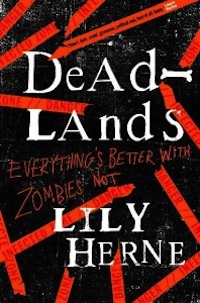
Lily Herne’s Deadlands series (Deadlands, Death of a Saint, The Army of the Lost) (2012–2014 -ish?) is the best zombie apocalypse series I’ve read. Full stop.
The zombies have come. South Africa is a very unpleasant place (See: zombies, apocalypse). The remaining human population lives in small, fortified enclaves, protected by mysterious shrouded figures known as the ’Guardians’. The cost, however, is immense. Sure, they’re not being gnawed by the undead, but the Guardians demand sacrifice, and the very concept of freedom is at an all-time low… When Lele, despite her family’s clout, is chosen for the Guardian’s special ’attention’, she stumbles into some of the dirty secrets framing her terrible little world. Perhaps the rebellion isn’t so bad (or so good) after all. Perhaps the zombies aren’t the real enemy. (Or perhaps they are, but people are pretty awful too.) Perhaps going to the mall is a really, really bad idea… The Deadlands series expands, as a trilogy should, as Lele discovers more about her city, her country and, eventually, her mission. She and her ‘mall rat’ friends have a chance to make things right. If they dare take it…
The Deadlands series succeeds on every front. It keeps the ‘fun’ of the zombie apocalypse, while still paying homage to their metaphoric role—a book about divisions in society, humans and ‘unhumans’ and dystopias has special resonance coming from post-Apartheid South Africa. Similarly, Lele and her band of freedom fighting pals are a charmingly progressive lot, characters from all backgrounds, philosophies and walks of life. Part of the Deadlands journey involves Lele seeing what all of the (remaining) cultures have to offer—how the apocalypse has changed (or not) societal structures, and, through Lele’s fresh but cynical eyes, we start seeing how the world can move on to a better place.
Lily Herne, by the way, is actually the pen name for Sarah Lotz and Savannah Lotz, her daughter—they wrote the books together. So I’m cheating a bit, but Lotz’s work as part of Herne, part of S.L. Grey and part of Helena Paige is too good not to reference. And by leaving out Pompidou Posse, I feel I’ve actually betrayed part of my own soul. Basically, read everything.
If you liked: William Sutcliffe’s The Wall, Cherie Priest’s Boneshaker, Katie Coyle’s Vivian versus the Apocalypse
If you’re looking for a broader survey of South African genre fiction, I suggest both Something Wicked and Jungle Jim. The former was once a magazine, but has now converted into an anthology series—the first two volumes are out and feature many of the names above, plus dozens of others, with an emphasis on horror, dark fantasy and particularly grim humour. Jungle Jim features modern pulp, with an African perspective—the magazines themselves are objects of art (I highly recommend springing to get physical copies) and the stories are terrific; edgy, fast-moving, pointed material that, like the best of pulp, combines an enjoyable pace with some serious messages.
And, finally, if you’re really invested in finding the next big thing, Short Story Day Africa sponsors annual competitions for writers of all ages. The adult collection, Feast, Famine and Potluck has two stories shortlisted for this year’s Caine Prize, which is an astounding achievement.
The collection by young writers, Rapunzel is Dead, is no less impressive. Rapunzel collects seventeen reinterpretations of classic fairy tales. Tweaking fairy tales is a new trend in genre fiction, yet having it done by actual children makes the results all the more poignant and powerful, and several of the stories are remarkable for writers of any age or experience level. A brilliant collection for a good cause, and I won’t be surprised when I see these names appearing again in the future. (And one final plug, as one of the judges of this year’s SSDA competition, please spread the word—we want three Caine nominees this time around.)
Jared Shurin wants all the books.










